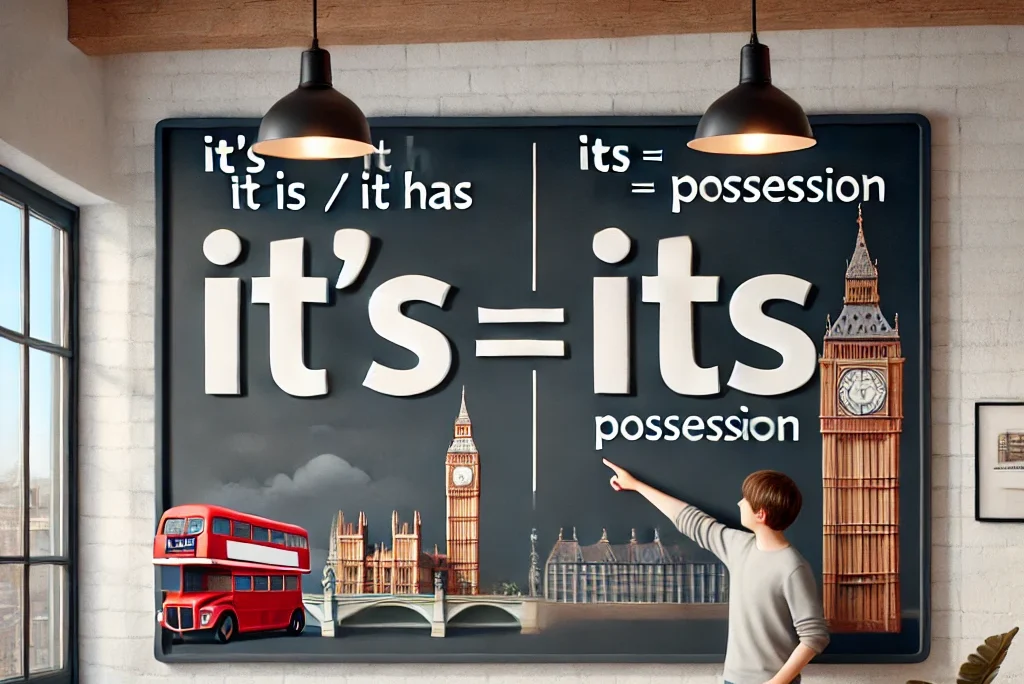It’s versus Its: Master the Difference and Improve Your English Language Skills
Do you struggle with “it’s” and “its”? You’re not alone! This small but important grammar rule can make a big difference to your English language writing. Whether you’re preparing for exams, writing emails, or just want to communicate more clearly, mastering “its” versus “it’s” is a must. Let’s break it down in a simple, practical way—and show you how learning English in a supportive environment, like a language school, can help you to stay in control of these details.
What’s the Difference Between “It’s” and “Its”?
“Its” is a possessive pronoun, used to show ownership.
– Example: “The dog wagged its tail.”
“It’s” is a contraction, short for “it is” or “it has.”
– Example 1: “It’s a beautiful day!” Here, “it’s” is a contraction of “it is”.
-Example 2: “It’s been a great experience learning English.” Here, “it’s” is a contraction of “it has”.
Why Does This Matter for English Learners?
Clear Communication: Using “its” and “it’s” correctly makes your writing more professional.
Exam Success: Small but important grammar mistakes like this can cost marks in exams like IELTS or Cambridge English, because they reveal how well you have mastered the English language.
Confidence Boost: Mastering tricky rules like this one builds your confidence as a language learner – and helps with mastering other tricky English language rules.
Tips to Remember the Difference Between “It’s” versus “Its”
- Test with “It Is” or “It Has”: If you can replace “it’s” with “it is” or “it has,” you’re using it correctly.
- Think Possession: If you’re talking about something belonging to “it,” use “its.”
- Practise Daily: Write sentences using both forms and ask a teacher or friend to check them.
How Learning in a Supportive Environment Helps
While self-study is great, learning in a structured environment like an English language school can make all the difference. Here’s why:
Expert Guidance: Teachers can explain tricky rules like “its” versus “it’s” in a way that’s easy to understand, and give you examples from which to learn.
Interactive Practice: Use your new skills in real-life interactions and activities.
Personalised Feedback: Get tailored advice to improve your grammar, pronunciation, and fluency.
Example Sentences to Practise; “It’s” or “Its”?
- The company celebrated its 20th anniversary.
- It’s important to practice English every day.It’s been a pleasure to help you with your grammar.
- The cat licked its paws.
Ready to Master English Grammar?
Whether you’re struggling with “it’s” versus “its”, or other grammar rules, the right support can make all the difference. At The English Studio, we’re here to help you every step of the way. Contact us today to learn more about our courses and start mastering English grammar with confidence! It’s great to learn the English language at The English Studio – its approach to teaching is unparalleled (See what we did there?!)
Improve your English Language Skills
Unlock your full potential with The English Studio! Our experienced teachers offer personalised English language training for everyone, helping you to improve your work and to grow your social, business and career opportunities . Find out how our specialised lessons can help you to reach your goals. Call us on +44 20 7299 1700 or email us at [email protected] for more information. You can also complete our online test to check your English level or to meet with our Education Advisors for tailored advice.





